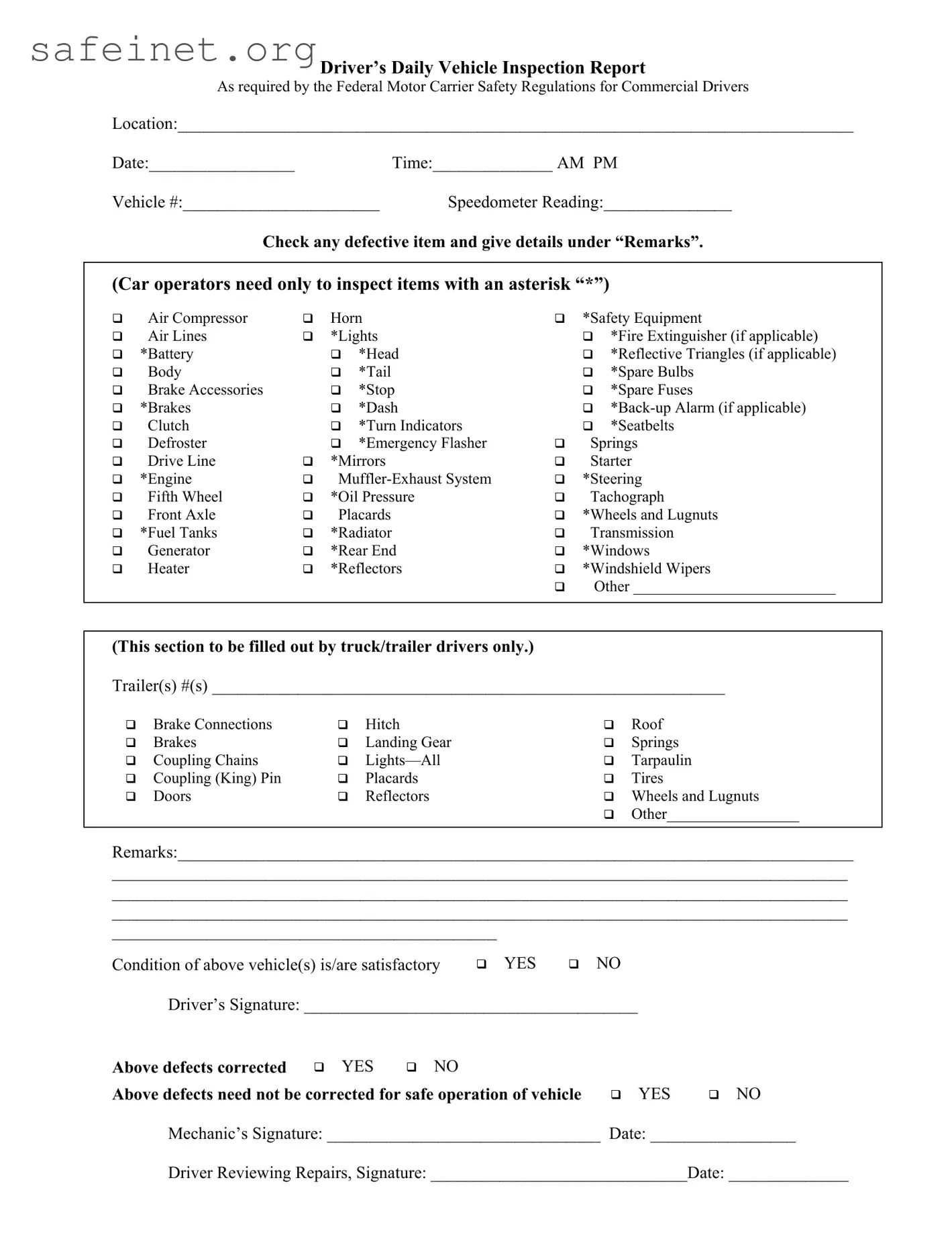What is the purpose of the Driver’s Daily Vehicle Inspection Report?
The Driver’s Daily Vehicle Inspection Report is a crucial tool designed to ensure that commercial drivers perform systematic checks on their vehicles. This report helps identify any defects or maintenance issues that could jeopardize safety on the road. By adhering to this requirement, drivers contribute to the overall safety of themselves, their passengers, and the public.
Who is required to complete the Daily Vehicle Inspection Report?
Every commercial driver operating a vehicle subject to federal regulations must complete the Daily Vehicle Inspection Report. This requirement applies to all drivers within the commercial driving sector, ensuring that each vehicle is properly inspected before hitting the road.
What items should be inspected on the report?
The report specifies various essential items that must be checked, including safety equipment like lights and brakes, as well as other components such as the steering system and the engine. While car operators are required to inspect only items marked with an asterisk, it is recommended that all drivers familiarize themselves with the entire list to ensure optimal vehicle safety.
How should defects be documented on the report?
If any defects are found during inspection, the driver should check the corresponding items and provide detailed remarks in the remarks section. Clarity in documentation is essential, as it allows mechanics to understand the issues that need addressing. The more specific the remarks, the easier it will be for those making repairs to know what to focus on.
What does it mean if the condition of the vehicle is marked as "satisfactory"?
Marking the condition of the vehicle as "satisfactory" indicates that the driver has completed the inspection and found no significant defects that would impair safe operation. It is a declaration that the vehicle is roadworthy at the time of inspection, but this does not absolve the driver from future inspections.
What should a driver do if defects are noted during the inspection?
If defects are noted, the driver has several options. The report requires the driver to indicate whether the defects have been corrected or if they do not need correction for safe operation. If serious defects are present, it is crucial to address them immediately before permitting the vehicle to drive. Safety should always be the primary concern.
Are inspections required for trailers as well?
Yes, trailers also require inspection by the driver. Various components, including brakes, lights, and tires, should be examined thoroughly. Properly inspecting both the truck and trailer ensures that the entire combination is safe for use on the road.
What happens if a driver fails to complete or inaccurately completes the report?
Failure to complete the report can lead to serious consequences, including fines or sanctions for the driver and their employer. An inaccurate report could lead to unsafe driving conditions and potential accidents. Both drivers and their employers hold accountability for diligent reporting to maintain safety standards.

